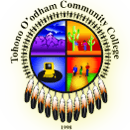Developing an Assessment Plan:
Program Learning Outcomes (PLOs)
Program Learning Outcomes (PLOs)
When developing a new program or doing a program modification, it is important to look at the development of PLOs.
What information is needed in developing good PLOs?
- Understanding of the mission, visions, and goals of TOCC which can be found here.
- Information from developing the program such as the purpose, description, and goals of the program. This should come from the community educational assessment that was performed when determining the need for the program.
- If the program requires special certification, outcome information based on certification requirements.
- If the program is for transfer, it is important make sure the PLOs align with other academic programs and transfer programs. A great resource for this is AZTransfer, which can connect you with other programs in the State of Arizona.
- Consultation with other faculty at TOCC who have experience developing PLOS and advice from the Faculty Senate Assessment Committee.
Guidelines for creating PLOs
- Each program should have at least three to six PLOs.
- PLOs should be measurable and be a knowledge, skill, ability, or attitude that can be observed or demonstrated in some manner.
- PLOs should be limited to statements of one to two sentences.
A good example of PLOs at TOCC are the PLOs for the Associate of Science in Life Science:
- Demonstrate knowledge of scientific concepts and vocabulary.
- Design and conduct a research project.
- Display a sense of place, by being able to identify health and environmental issues on the Tohono O’odham Nation and propose a culturally-appropriate solution.
- Apply critical and creative thinking skills to solve problems.
Notice these PLOs have certain qualities (1) measurable, (2) demonstrable by the student, and (3) reflect both what is needed for a student studying life science at the associate’s level but also what is needed to address Tohono O’odham culture tying back to the College’s mission, vision, and goals. If you need help developing PLOs, there are many tools available on the internet.
Next Step After Developing PLOs
After creating good PLOs, the next step is to create a curriculum map as show in Attachment B: Curriculum Map of the New Program Form. The curriculum map provides a guide to determine in which courses a particular PLO is introduced, reinforced, and assessed. Determining which course should be at each level is established by the course level (100 or 200) and the student learning outcomes (SLOs) which govern the content of that course. Because PLOs are broad, a course may have a few or several SLOs to address one specific PLO. In some cases, an entire course, especially at the Introduce level, can be dedicated to a single PLO.
After completing a curriculum map, the next step is to develop an assessment plan, which takes the curriculum map and determines how to measure the PLO. Institutionally, the minimal assessment of a PLO should be done at the course-level assessment and is what will be required by the Dean of Academics each semester (see “Ongoing Assessment of Student Learning” link to below). However, each faculty area expert can determine how a program should be assessed. For example, a program may choose to do a pre- (assess at Introduce level) and post- (assess at Assessment level) evaluation. Faculty should also determine the type of assessment, meaning quantitative (e.g., percentage of pass on a task, score on an exam) or qualitative (e.g., observation of a skill or attitude).
The preferred method of assessment is an embedded assessment, which is a task or assignment that is built into a course and is always a part of the curriculum of that course. For more information on embedded assessments at TOCC, see this video.
After determining when and which courses assessment should take place and the embedded assessment that is best to measure a PLO, the next step is to work with the Dean’s Office and the Faculty Senate Assessment Committee on continually determining and refining the plan and results of assessment.

